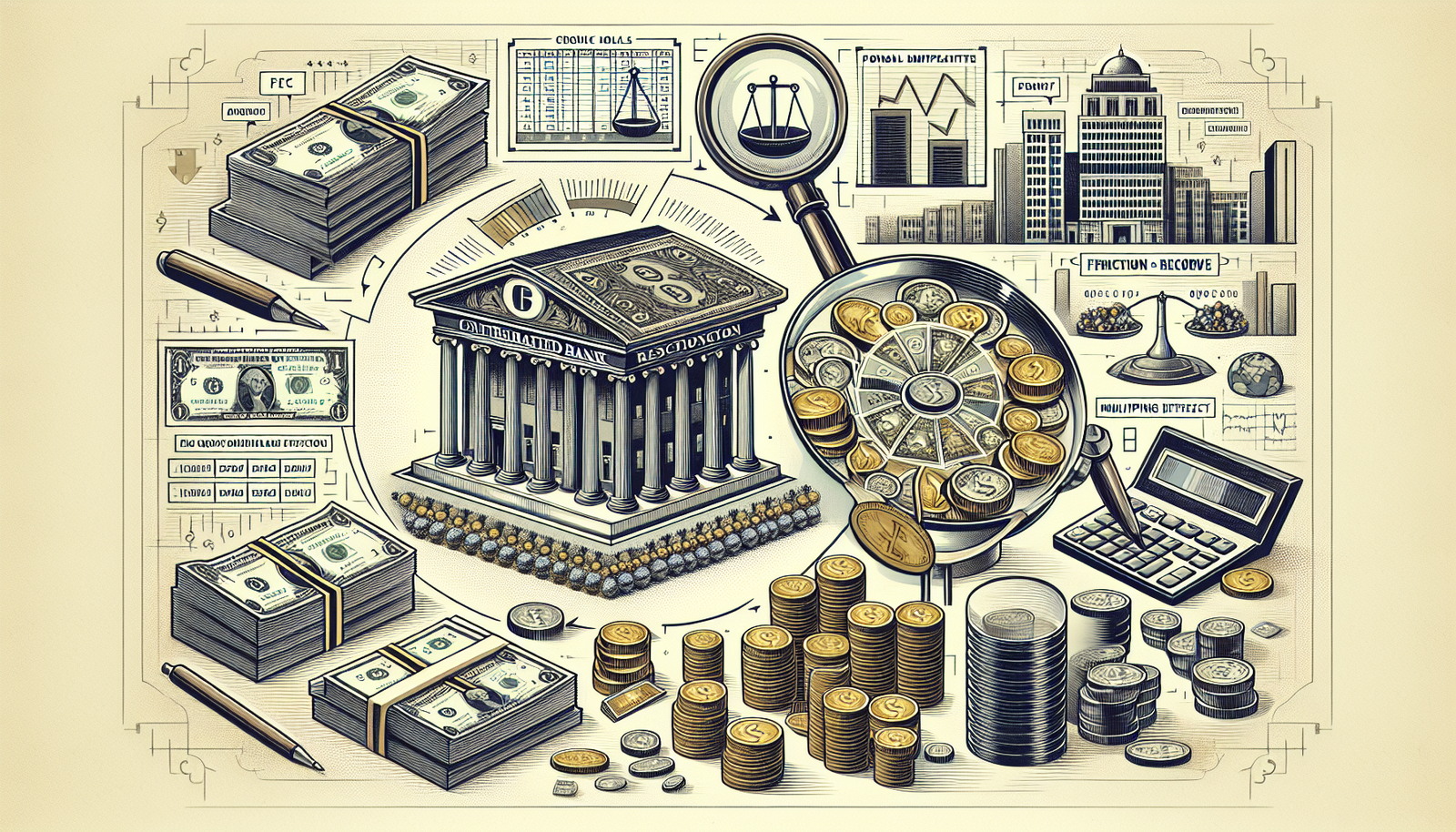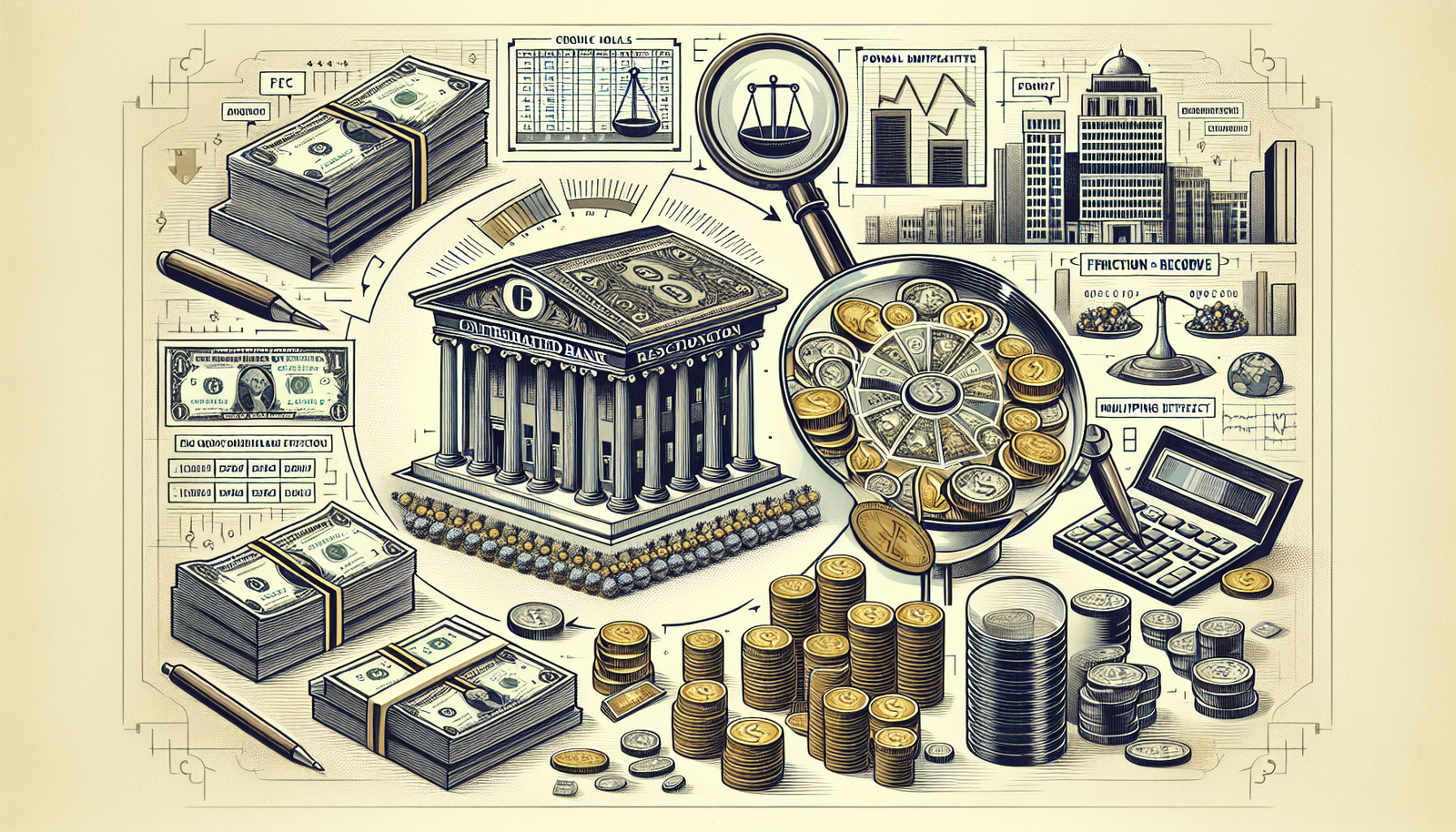
Into the enchanting world of financial alchemy, the article “money creation Formula” leads you on a thrilling excursion. It unravels the fascinating interplay of systems, techniques, and strategies that subtly shift the rudimentary concept of money-earning to the mysterious realms of money creation. This intriguing narrative seamlessly blends the logical and the magical, equipping you with an ever-evolving blueprint for economic transformation. Brace yourself for a remarkable journey that promises to alter your monetary perspective and empower you with a formula that resonates with your unique financial fingerprint. Now, let your mind wander in this riveting symphony of economics, where each note is a nugget of wisdom in monetary orchestration.

Understanding Money Creation
Picture yourself on a voyage through the vast ocean of the economy. Your trusted companion and marker of worth is money. But have you ever paused and pondered, “Where does this money come from?” or perhaps, “Who creates money in the first place?” Let’s pull away the curtains and delve into the captivating theater of monetary conjuring – money creation.
Definition of Money Creation
Money creation is a fascinating concept that shapes your everyday life. In simple terms, it is a process by which the money supply of an economy is increased by central and commercial banks. The newly minted money then sails out into the economic ocean, weaving its way through hands, wallets, and bank accounts, facilitating transactions, and driving economic activity.
Historical perspective
The creation of money is as old as the concept of trade itself. In the past, money often took the form of precious metals, shells, and even bartering, transforming and adapting to fit societal needs. With time, banking institutions emerged, and the evolution was such that we now have a sophisticated system of money creation involving central banks, commercial banks, and financial instruments.
Real-world examples
You need neither a magician’s wand nor a minting press to create money, as it often exists merely as numbers on a screen. Consider a real-world example of a bank providing a loan. When a bank grants you a loan, it doesn’t hand over cash from its vault. Instead, it creates a deposit in your account, thus conjuring new money from thin air.
Types of Money in the Economy
Now that you’re beginning to understand money creation let’s explore the different types of money that inhabit your economic cosmos.
Commodity money
Commodity money is as raw and real as it gets. It’s a type of money that has intrinsic value, i.e., it’s valuable in and of itself, such as gold or other precious metals. The worth isn’t simply skin-deep; it’s etched into the tangible fabric of the commodity.
Fiat money
Fiat money is your everyday money – the paper notes and coins in your wallet. However, if you blink away the illusion, you’ll perceive that it’s just paper and metal with no inherent value. Its value lies in the trust and authority we bestow upon it, as guaranteed by the government.
Digital or Electronic money
In this digital age, money is increasingly becoming a string of 1s and 0s. Digital money, housed in our electronic devices, facilitates payments without the necessity for physical cash. This includes online bank transfers, mobile payments, and even digital money like Bitcoin.
The Process of Money Creation
Buckle up and brace yourself as we voyage into the enthralling process of money creation.
Role of the central bank
First and foremost, we have the central bank, the puppet master in the grand play of money creation. It manipulates the strings of monetary policy, supplying commercial banks with reserves, controlling interest rates, and ultimately influencing the amount of money rolling around in the economic landscape.
Role of commercial banks
The central bank sets the stage, but the protagonists of the money creation drama are the commercial banks. They create money by providing loans and creating deposits, a process made possible by the fractional reserve system, which we’ll venture into next.
Interplay between demand and supply of money
In this grand economic ballet, the demand and supply of money pirouette around each other. The central and commercial banks generate the money supply, while various factors like inflation, the economy’s health, and interest rates shape the demand.

Fractional Reserve System
At the heart of money creation lies the intriguing fractional reserve system.
Explanation of the fractional reserve system
The fractional reserve system is a banking mechanism where banks hold a fraction of depositors’ money as reserves and lend out the rest, thereby creating new money. Every loan granted adds to the deposit base, allowing further lending, propelling a multiplier effect on money creation.
Working principles
Imagine you deposit $100 in your bank. The bank holds a fraction as reserve (say 10%) and can lend $90 to another customer who might deposit this $90, allowing the bank to lend out $81, and so on. This cycle spins the wheel of money creation.
Impact on money creation
This system is the true springboard for money creation, as every cycle of lending and depositing increases the money supply.
Money Multiplier Effect
Unraveling next is the concept of the money multiplier, a close confidant of the fractional reserve system.
Definition of money multiplier
The money multiplier is a sophisticated concept fostered by the fractional reserve banking system. It measures the maximum amount of money that an initial deposit can generate, provided that all the newly created deposits are reloaned.
Calculating the money multiplier
The money multiplier formula is straightforward – it’s the reciprocal of the reserve ratio. For instance, with a reserve ratio of 10%, the money multiplier is 1/0.10 = 10. Thus, an initial deposit of $100 could theoretically create up to $1000 of new money!
Implications for money supply
The money multiplier effect implies that a single initial deposit can amplify the money supply due to the repeated rounds of lending and depositing, acting as a catalyst in the money creation process.
Role of Government Policies in Money Creation
Money creation doesn’t follow a free reign; it swirls around the axis of the government’s policies.
Monetary policy
Monetary policy is the central bank’s strategy to regulate the money supply and control interest rates. By altering these, they control the speed at which money is created, influencing the economy’s course.
Fiscal policy
Fiscal policy, dealing with government revenue and expenditure, also plays a role, albeit indirectly, in money creation. Government spending can spur economic activity, influencing the demand for money.
Regulations and their impact
Banking regulations like reserve requirements and capital adequacy ratios also influence money creation. They set the boundaries for banks’ lending activities, regulating the pace of money creation.
Impacts of Money Creation
The power to create money breeds consequences, shaping the contours of the economic landscape.
On inflation rates
Money creation is like kindling a fire; when left uncontrolled, it can turn into devastating inflation. An excessive increase in the money supply can devalue money, leading to higher prices.
On economic growth
In the right proportions, money creation can spur economic growth by providing the necessary liquidity for businesses, fostering investments and creating jobs.
On wealth distribution
Money creation can influence wealth distribution, sometimes aggravating wealth inequality. The wealthy, with easier access to credit, can grow their wealth faster, especially when newly minted money inflates asset prices.
Controlling Money Creation
Just as money creation is a potent tool, controlling its power is equally crucial.
Tools used by the central bank
The central bank employs various tools to control money creation – such as altering the reserve requirements, changing interest rates, or conducting open market operations.
Implications of excessive money creation
Unchecked money creation can spiral into hyperinflation, creating an economic whirlwind. It can erode the value of money and distort price mechanisms, crippling the economy.
Importance of maintaining a balance
Striking a balance in money creation is pivotal. While too much can ignite inflation, too little can stifle economic growth. It’s a delicate dance between maintaining monetary stability and fueling economic activity.
Money Creation in a Digital Economy
Shifting gears, let’s venture into the realm where money creation meets the digital economy.
Role of cryptocurrencies
Cryptocurrencies like Bitcoin have thrown a wrench into the conventional gears of money creation. They challenge the central authority’s control over money, introducing a decentralized system for creating and managing money.
Impact of online banking
Online banking and fintech innovations have further expanded the scope of money creation. Reducing dependency on physical cash and speeding up transactions, they have refined the process of money creation.
Potential future trends
As we hurtle into a future where digital economies take up more space, groundbreaking trends like peer-to-peer lending, autonomous digital currencies, or open banking could further transform the landscape of money creation.
Limitations and Criticisms of Money Creation
Although money creation is an essential cog in the economic machine, it has its fair share of critics and caveats.
Risk of hyperinflation
The risk of hyperinflation is a prominent criticism of unchecked money creation. Recent economic crises in Zimbabwe and Venezuela are stark reminders of how excessive money creation can lead to hyperinflation and economic collapse.
Issues with fractional reserve banking
Some critics argue that the fractional reserve banking fuels boom-bust cycles, as it enables banks to create money out of thin air, leading to economic instabilities.
Debate over money creation’s role in wealth inequality
There’s a simmering debate over whether money creation exacerbates wealth inequality. Some argue that the money multiplier effect disproportionately benefits the wealthy, inflating assets and widening the wealth gap.
To sail the financial seas effectively, grasp the understanding of how money is created and handled. Though the waters of money creation can be confusing, your journey through it is crucial to comprehend the financial ebb and flow that affects your life. As we tread into a future teeming with digital economies and innovative financial trends, the stake to understand money creation has never been higher. So steer your ship with the knowledge in your sails and brace for the exciting voyage ahead!

Leave a Reply